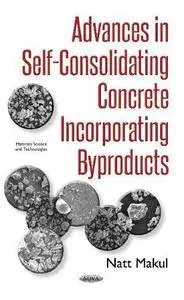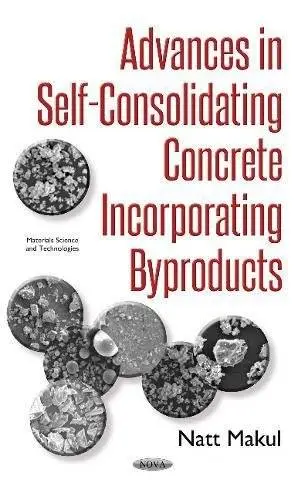Advances in Self-Consolidating Concrete Incorporating Byproducts
Nova| English | 2017 | ISBN-10: 1536122084 | 285 pages | PDF | 10.44 mb
Nova| English | 2017 | ISBN-10: 1536122084 | 285 pages | PDF | 10.44 mb
by Natt Makul (Author)
As a fundamental building material in modern times, concrete has been subject to continual development. It has evolved from a simple mixture of basic elements, i.e., hydraulic cement, water, and aggregates, to become a modern high-performance material — a material designed to respond to the environment and in some versions to preserve it. This book reflects the recent research developments in regards to concrete technology. As such, it focuses on the innovative high-performance concrete known as self-consolidating concrete (SCC). This kind of concrete has outstanding properties such that it can flow and become compact by its own weight without bleeding and with minimal reliance on energy. Originating in Japan in 1983 in response to a labor supply shortage in the construction industry, SCC requires less work to compact in the production process than conventional concrete does. That is, unlike conventional concrete, SCC can flow by its own weight and requires very little vibration to compact.
This book is for readers who want to become well-versed in the most important current research in the field of novel SCC. The book will be useful for students, researchers, concrete scientists and technologists, and practicing engineers. This book consists of eight chapters. Each chapter is comprised of an introduction, a discussion of the concept of the design and the concrete’s development, and the properties and testing of the concrete in fresh and hardened stages of SCC.
Clearly, the properties of concrete, especially SCC, have shown remarkable improvement in recent years, and the movement toward more environmentally sound production practices is also encouraging. The opportunity to offer a detailed account of SCC in this light constitutes the author’s principal reason for writing this book, which is itself the result of significant research. Despite his best efforts, though, it may be that the author’s account includes some errors, for which he takes full responsibility. Nevertheless, it has been the author’s great pleasure to write this book, which he hopes will prove useful to readers both in the context of research and in the context of practical applications of SCC.
The author thanks Phranakhon Rajabhat University under the project “Survey, Assessment and Development of Cementitious Potential of Byproducts Obtained from Biomass Power Plant in Thailand as Concrete Materials in the Production of Special Concrete” for providing financial support for this project.



